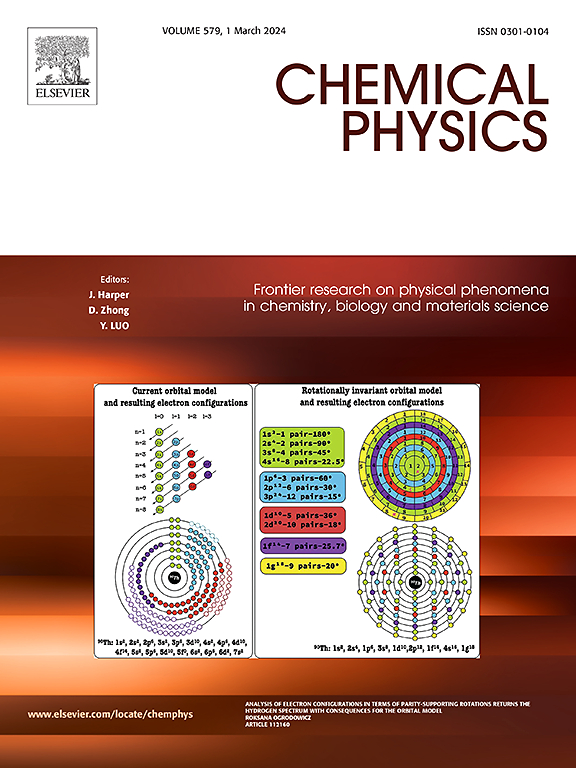基于自发极化和本征电场协同效应的MoS2/MoSSe异质结精确带对准调制
IF 2.4
3区 化学
Q4 CHEMISTRY, PHYSICAL
引用次数: 0
摘要
随着光电器件的快速发展,精确调节异质结构中界面电荷分离和光吸收已成为克服性能瓶颈的关键挑战。本文通过第一性原理计算构建了MoS2/MoSSe范德华异质结构(vdWHs),以研究自发极化和内置电场如何调制结构稳定性、电子特性和光学特性。结果表明,所有构型均表现出良好的热力学稳定性。值得注意的是,Janus MoSSe的本征自发极化在决定MoS2/MoSSe vdWHs的波段对准中起着关键作用。当内置场和极化场在界面处(→←)汇聚时,形成ii型波段对准;当它们偏离(←→)时,出现i型对齐。进一步分析表明,MoSSe独特的偏振场显著提高了光吸收能力,吸收系数达到1.64 × 106 cm−1,比单层MoSSe提高了36%。这项工作为异质结构光电性能的极化场诱导调制提供了理论见解。本文章由计算机程序翻译,如有差异,请以英文原文为准。
Precise band alignment modulation in MoS2/MoSSe heterojunctions via synergistic effects of spontaneous polarization and intrinsic electric fields
With the rapid advancement of optoelectronic devices, precisely regulating interfacial charge separation and light absorption in heterostructures has become a key challenge in overcoming performance bottlenecks. Here, MoS2/MoSSe van der Waals heterostructures (vdWHs) are constructed via first-principles calculations to investigate how spontaneous polarization and built-in electric fields modulate structural stability, electronic properties, and optical characteristics. The results reveal that all configurations exhibit favorable thermodynamic stability. Notably, the intrinsic spontaneous polarization in Janus MoSSe plays a key role in determining the band alignment of MoS2/MoSSe vdWHs. When the built-in and polarization fields converge at the interface (→←), a type-II band alignment forms; when they diverge (←→), a type-I alignment emerges. Further analysis demonstrates that the unique polarization field of MoSSe significantly enhances light absorption capability, achieving an absorption coefficient of 1.64 × 106 cm−1, representing a 36 % improvement over the monolayer MoSSe. This work provides theoretical insight into the polarization-field-induced modulation of heterostructure optoelectronic performance.
求助全文
通过发布文献求助,成功后即可免费获取论文全文。
去求助
来源期刊

Chemical Physics
化学-物理:原子、分子和化学物理
CiteScore
4.60
自引率
4.30%
发文量
278
审稿时长
39 days
期刊介绍:
Chemical Physics publishes experimental and theoretical papers on all aspects of chemical physics. In this journal, experiments are related to theory, and in turn theoretical papers are related to present or future experiments. Subjects covered include: spectroscopy and molecular structure, interacting systems, relaxation phenomena, biological systems, materials, fundamental problems in molecular reactivity, molecular quantum theory and statistical mechanics. Computational chemistry studies of routine character are not appropriate for this journal.
 求助内容:
求助内容: 应助结果提醒方式:
应助结果提醒方式:


